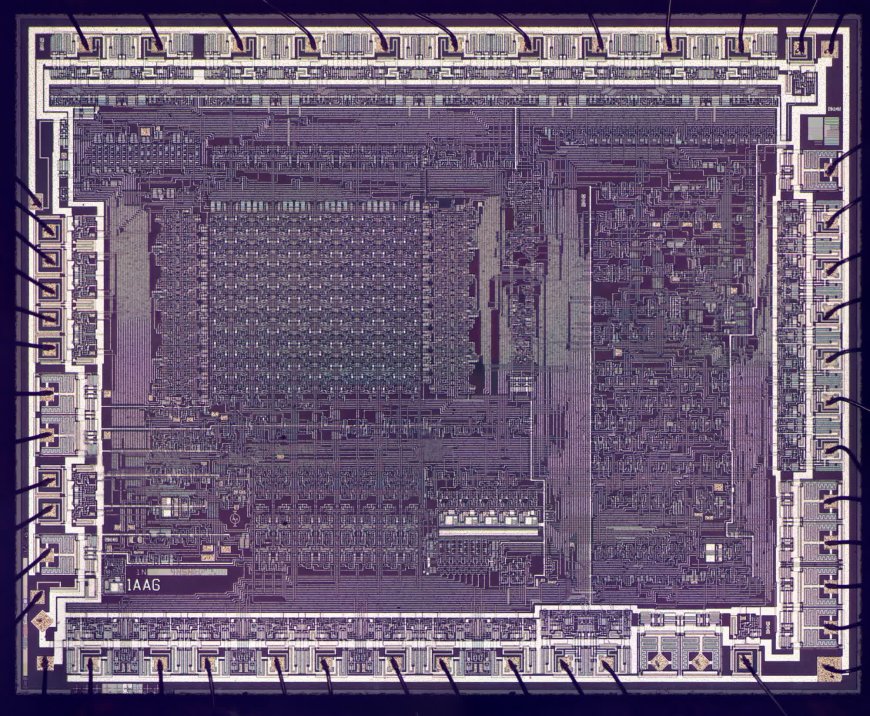Discovering an Ancient Silicon-on-Sapphire Chip in an HP Floppy Disk Drive
Ken Shirriff, an enthusiast in IC reverse engineering and vintage computer restoration, made a fascinating discovery while repairing an 8-inch HP floppy drive. He unearthed an obsolete silicon-on-sapphire chip, a technology nearly lost in time.

The Unearthing Process
Shirriff decapped the broken interface chip in the floppy drive and photographed it, revealing its unique structure. The chip, partly transparent, is based on a sapphire substrate with silicon elements and metal wiring. It functioned as an interface between HP's interface bus (HP-IB) and the Z80 processor within the floppy drive controller.
Silicon-on-Sapphire Chip Characteristics
The chip, identified as a PHI (Processor-to-HP-IB Interface) component, played a crucial role in various HP products. It managed bus protocol and buffered data exchanges. The sapphire substrate grants the chip isolation of transistors and reduces capacitance, enhancing performance and providing resistance against radiation or low-impedance short circuits.
Also Check Deep Cleaning Your Keyboard: A Comprehensive Guide
Historical Significance and Comparisons
Silicon-on-sapphire technology dates back to at least 1963 and was utilized in spacecraft, including the Galileo probe. Shirriff compares the PHI chip to 1970s processors on both silicon-on-sapphire and silicon substrates. He highlights the HP MC2 16-bit processor (1977) with silicon-on-sapphire technology, boasting 10,000 transistors and running at 8 MHz on 350 mW. In contrast, the Intel 8086 (1978) on a silicon substrate had 29,000 transistors, initially ran at 5 MHz, and consumed up to 2.5 watts.
Manufacturing Challenges and Legacy
Although silicon-on-sapphire chips had performance and power advantages, they lagged in transistor density compared to silicon chips. Manufacturing challenges, such as crystal incompatibility between silicon and sapphire, yielded only a nine percent success rate for HP. These difficulties contributed to silicon's dominance in IC manufacturing in the years that followed.
Conclusion
Shirriff's discovery of the silicon-on-sapphire chip in an ancient HP floppy disk drive sheds light on a nearly forgotten manufacturing technology. Despite its unique benefits, crystal incompatibility issues and lower transistor density compared to silicon substrates eventually led to the decline of silicon-on-sapphire in IC manufacturing. This historical find underlines the evolving nature of technology and the continuous quest for more efficient and powerful computing solutions.


































